Changing Chords While Strumming
Changing chords while strumming and be a daunting technique for beginners. So let’s practice getting our left and right hands working together. To help, I’m going to introduce a new musical sign. It is a 1/4 note rest. It looks like this:

It simply means ‘don’t play for one beat.’
Study and listen to the following:
Example 6a
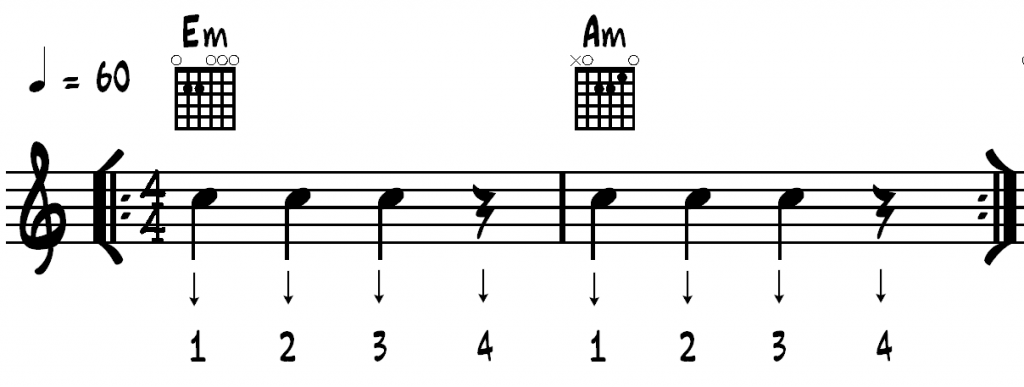
The strumming pattern is easy: Down Down Down Rest. On the rest, keep the right hand moving but just miss the strings. Don’t forget to bring it back up ready for the Down of the second bar.
The rest on beat 4 is very deliberate. It gives you extra time to change chord from E minor to A minor.
Begin with your metronome set on about 60 beats per minute. Feel free to slow it down if you can’t quite manage the chord change yet. Start with three steady down strums on the E minor chord, and on beat 4 slide your fingers across the strings adding your 1st finger to form A minor as you have previously practiced. Play the three down strums on A minor and then slide back to E minor. Keep repeating this sequence.
At this stage, DO NOT WORRY ABOUT BUZZING OR MUTED NOTES! In fact, don’t worry about the quality of the sound. All we’re learning is the muscle movement to get to A minor in time.
Imagine you’re in a band playing in front of 50,000 people. Which do you think they’ll notice more: the odd buzzy note or you completely stopping in the middle of a song?!
Keep playing, ignore any mistakes and keep focused on hitting the new chord on beat 1.
When you think you’re doing ok with that, try this rhythmic idea in audio example 6b:
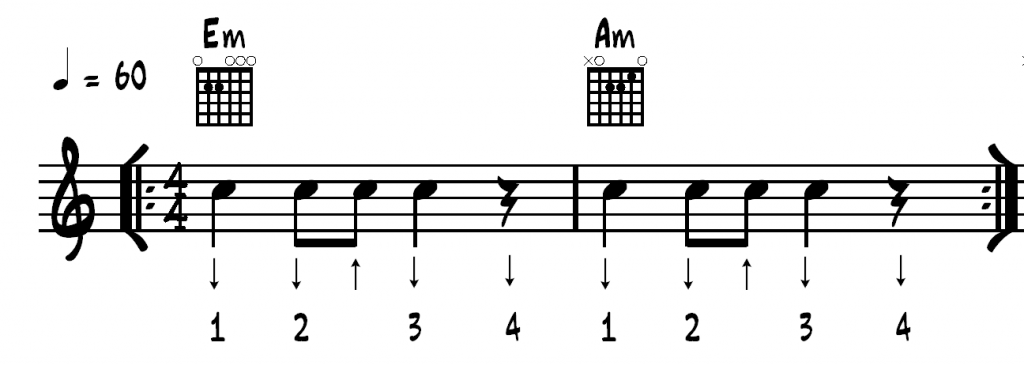
Always play with the metronome, ignore any fretting hand errors and make sure you hit beat 1 with the new chord on a down stroke.
Here’s a slightly more complex rhythm:
Audio Example 6c

Apply the previous three rhythms to the following 2 bar chord progressions:
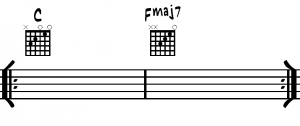
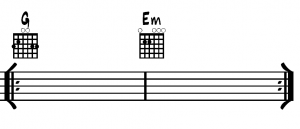
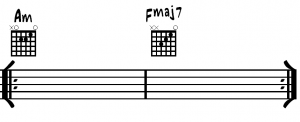
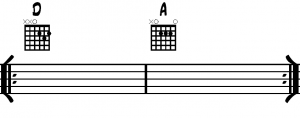
As you get better at this, try adding a down strum on beat 4. Here are some rhythms you might like to experiment with:

Try these rhythms with the previous chord progressions and, if you feel like it, add in new chords at the back of the book and start experimenting with your own ideas. Practicing changing chords while strumming in this way is an extremely musical way to develop your guitar playing
Take a second to think about an acoustic song you know. When you break it right down, most songs are only a melody, chord progression and rhythm. It’s a very cold way of looking at music and ignores a lot of other factors, but with just these three components you can play any song you like.
To make sure you’re learning the guitar in the right way, check out my book designed to teach beginners the right habits fast: 15 Essential Guitar Lessons for Beginners.
